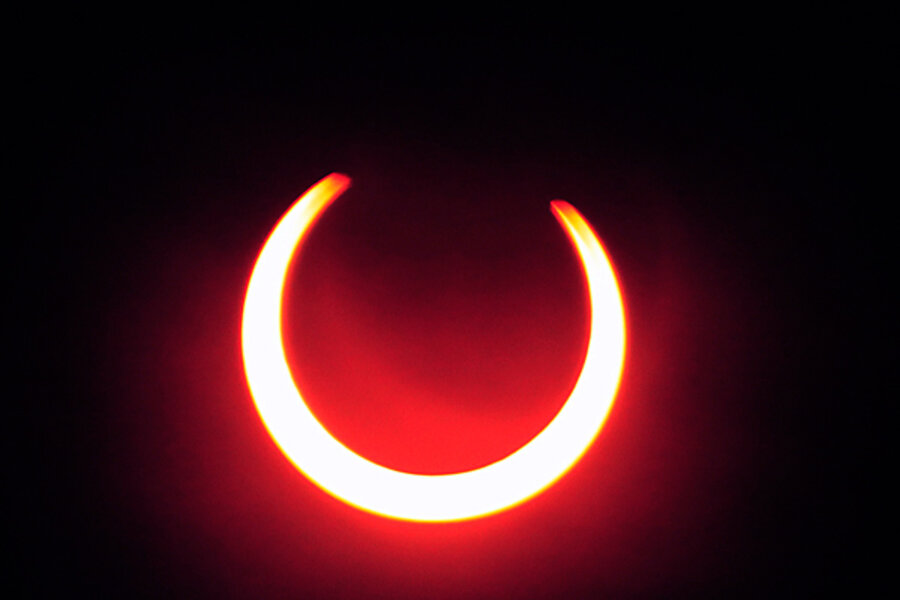Using a satellite to create an artificial eclipse
Loading...
A solar eclipse with the moon blocking the sun may look eerie on Earth, but scientists hope to achieve something similar using two free-flying satellites, with one always flying in its robotic partner's shadow.
The mission would create an artificial eclipse for the observing satellite and allow a year-round glimpse into the sun's inner corona, which is the super-hot plasma atmosphere wreathing the sun.
"The idea was to perform relative positioning between the two satellites and absolute positioning with respect to the sun," said Sebastien Vives of LAM, who led the European Space Agency (ESA) research group.
Simple coronagraphs typically use a circular disk inside a sensor to block out the direct glare from the sun so that scientists can study the fainter areas surrounding the sun's main body. Coronagraphs also help pick out the faint extraterrestrial planets orbiting brighter stars.
Rather than rely on a typical coronagraph, the two satellites would fly in tandem with a distance of 492 feet (150 meters) between them. One would carry a coronagraph instrument to peer at the sun, and the other would act as the 'occulter' and try to cast a shadow with a max positioning error of just a few millimeters.
European researchers unveiled a scale-model of the idea in late April after a six-month huddle at the Laboratoire Astrophysique d'Marseille (LAM) in southern France. The prototype was built under ESA's StarTiger research program.
Light reflected by a distant mirror helped mimic the planned operating distance, with a simulated sun, the occulter and the coronagraph all sitting on an optic bench.
The StarTiger coronagraph would use a liquid-crystal-based spectrometer and a 'smart' active pixel sensor detector to cover a wide, changing range of light levels from the sun's corona.
"These will help us reach a key science aim, being able to trace the movement of different high-temperature elements in the corona at the same time we're monitoring its fine structure," said Dominic Doyle, an optical engineer at ESA's Optics Laboratory.
The effort represented part of ESA's StarTiger initiative that brings together scientists and engineers, gives them state-of-the-art labs, and sets a deadline for a targeted breakthrough. Such early lab prototypes have allowed the researchers to continue planning for a future mission that has yet to be determined.
One of the biggest challenges would involve having the satellites to fly precisely together when traveling at several miles per second through space. Photosensors around the coronagraph can help track the shadow's positioning from the occulter, researchers said. The occulter satellite also has an LED light array that permits optical tracking of its target.
All that effort goes toward maintaining the sustained but precise shadow on the coronagraph.
ESA officials concede there are still some major hurdles facing a formation-flying mission like the StarTiger coronagraph. But the agency has plans to push the technology forward.
Europe's upcoming Proba 3 mission is expected to be first and foremost a demonstration of the ability for satellites to fly in formation. Even the coronagraph's images would reveal deviations in the tandem-flying satellites, and so help check that both spacecraft are flying correctly.





